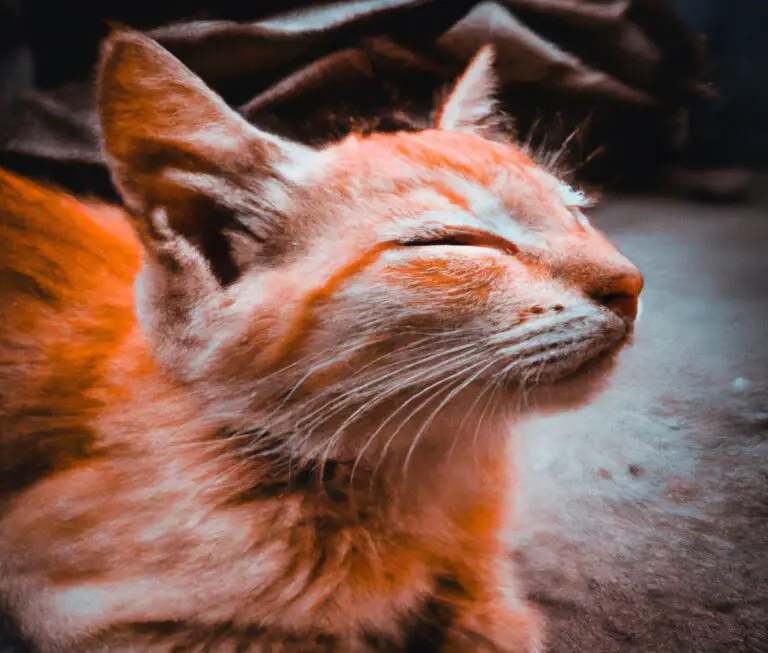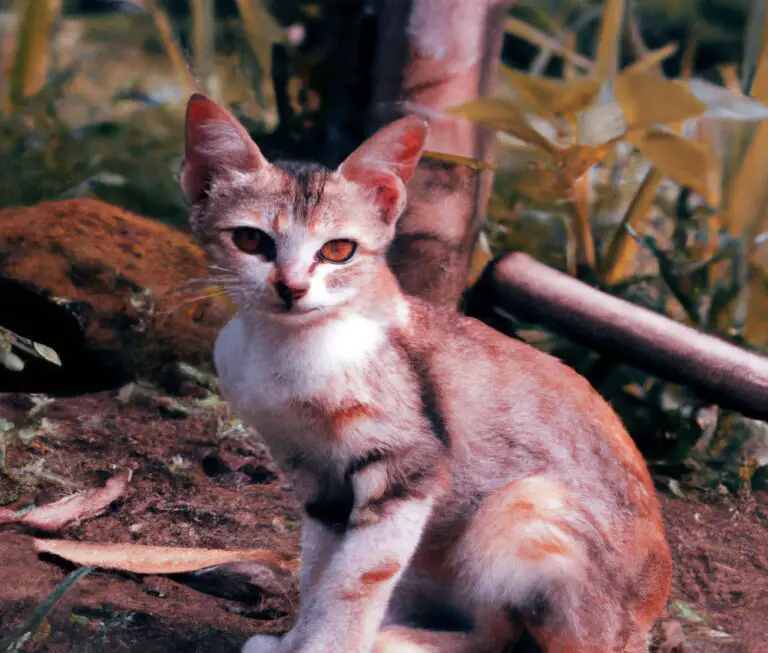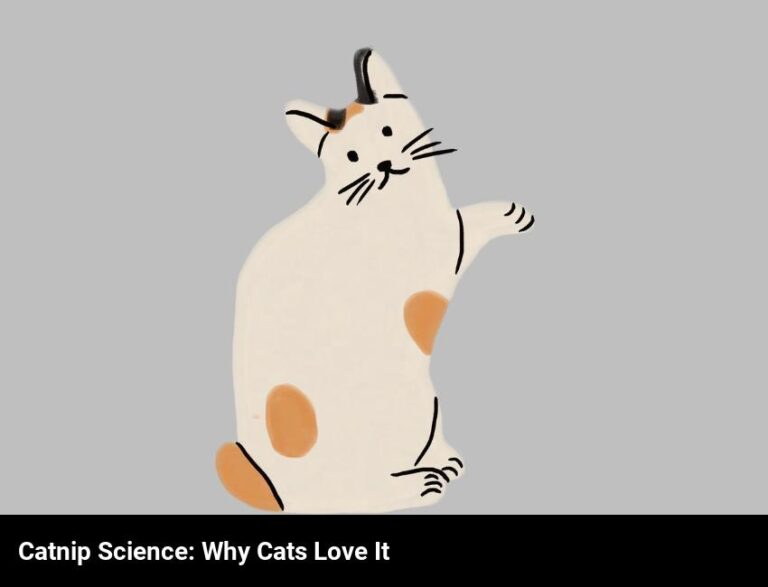Understanding Feline Communication: Body Language And Sounds
Felines communicate with us through body language and sound. They use facial expressions, postures, tail movements, and vocalizations to express their feelings and needs. Understanding these signals can help us better connect with our cats, and build a strong bond with them.
As a cat owner, I know all too well how difficult it can be to interpret my pet’s behavior. From meows and purrs to tail twitches and chin rubs, cats use a variety of body language and vocalizations to communicate with us. But what do those signals mean?
In this blog, I’ll explore the world of feline communication. You’ll learn about the common body language signs cats use to express themselves, as well as the different types of meows and what they indicate. I’ll also provide tips on how to recognize when your cat is feeling stressed or aggressive, and what you can do to better understand your pet’s communication.
What are the common body language signs cats use to communicate?
Yes, cats do use body language to communicate! While they might not be able to use words, cats are capable of expressing themselves in a variety of different ways. Here are some of the most common body language signs cats use to communicate:
- Eye contact: Cats can use eye contact to express a range of different emotions, from curiosity to aggression. If your cat looks directly into your eyes and holds the gaze for longer than a few seconds, it could be a sign that they’re trying to tell you something.
- Ear positions: Cats can move their ears to communicate a range of different messages. For example, if your cat’s ears are pointing forward, it’s usually a sign of alertness and interest. On the other hand, if their ears are flattened back against their head, this is often a sign of aggression or fear.
- Tail positions: A cat’s tail can act as a barometer for their emotional state. If their tail is held high and moving, this is often a sign of happiness and contentment. On the other hand, if their tail is low and twitching, they may be feeling threatened or anxious.
- Purring: Purring is one of the most common ways cats communicate. It’s usually a sign of contentment, but it can also be used to express other emotions, such as comfort or fear.
By understanding these common body language signs, you’ll be able to better understand your cat’s emotions and communicate with them more effectively.
What are the different types of meows and what do they mean?
One of the most fascinating things about cats is their ability to communicate using different meows. Different types of meows can mean different things and it’s important to understand what your cat is saying.
The first type of meow is the purr. This is a deep, continuous sound that cats make when they’re content or happy. It’s a sign that your cat is feeling safe and secure.
The next type of meow is the trill. This meow is a sound that is sort of like a chirp or a purr. It’s usually a sign that your cat is excited or wants to greet you.
The third type of meow is the chirp. This is a short, high-pitched sound that your cat may make when they see you or something they’re excited about.
The fourth type of meow is the yowl. This is a loud, long sound that your cat may make when they’re in pain or when they’re feeling stressed out.
Finally, there’s the mew. This is a soft, gentle meow that your cat may make when they’re feeling affectionate or when they want your attention.
When it comes to understanding feline communication, learning the different types of meows is essential. Each meow has a different meaning and it’s important to be able to recognize and interpret them.
What behaviors indicate that a cat is feeling stressed or aggressive?
When it comes to understanding a cat’s communication, it’s important to be aware of the body language and sounds they make. Knowing how to recognize when they’re feeling stressed or aggressive can help you create a comfortable and safe environment for both you and your feline friend.
One common sign of stress or aggression is when a cat flattens its ears against the back of its head. It’s also a good idea to watch out for hissing, growling, and snarling- all indications of agitation. If your cat is arching its back, puffing out its fur, or turning sideways to make itself look bigger, it’s likely feeling threatened.
Another sign of agitation is when a cat starts lashing its tail from side to side. It may also become more vocal- meowing, yowling, and chattering are all sounds that show a cat is upset. If you notice any of these behaviors, it’s important to give your cat some space and allow them to relax on their own.
Finally, if your cat is feeling stressed or aggressive, they may engage in aggressive behavior such as swatting, biting, or scratching. If this happens, it’s important to move away and avoid further contact until the cat has calmed down.
By paying attention to the body language and sounds your cat makes, you can gain insight into their feelings and better understand their behavior. This can help to create a safe and comfortable environment for your feline friend.
How do cats use vocalizations to express themselves?
Have you ever wondered why your cat meows, purrs and trills? Cats use vocalizations to express a range of emotions, from pleasure and pain to happiness and fear. Here are some of the most common sounds cats make and what they mean:
- Meowing: Meowing is cats’ primary form of communication with humans. Cats meow to say hello, ask for help, and to express their needs, such as hunger or thirst.
- Purring: Cats purr when they’re content and happy. Purring is also thought to have a soothing effect on cats and can even help them recover from illness or injury.
- Hissing: Hissing is cats’ way of telling other animals and people to stay away. It’s usually a sign of fear or aggression and should be taken seriously.
- Trilling: Cats produce a trill-like sound when they’re excited or trying to get your attention. It’s usually accompanied by a head-bobbing motion and can be interpreted as a form of greeting.
- Yowling: Yowling is a form of loud, drawn-out vocalization that cats use to express frustration or distress. It’s usually heard when a cat is feeling threatened or trying to locate a lost companion.
Cats are highly communicative creatures and their vocalizations are just one of the ways they express themselves. By paying attention to the sounds your cat makes, you can better understand their emotions and needs.
How can owners learn to interpret their cat’s body language and vocalizations?
Learning to read your cat’s body language and vocalizations is key to understanding your pet’s needs and building a strong bond between you. Here are some tips for getting started:
First, pay attention to your cat’s ears. When the ears are pointed forward, your cat is engaged and interested. If the ears are flattened back or sideways, your cat is feeling defensive or scared.
Second, observe your cat’s tail. When the tail is held high and moving, your cat may be feeling excited or playful. If the tail is held low or tucked between the legs, your cat is feeling anxious or scared.
Third, look at your cat’s eyes. If the pupils are dilated, your cat may be feeling agitated or scared. If the pupils are normal, your cat is feeling relaxed and content.
Finally, take note of your cat’s vocalizations. A high-pitched meow is usually a sign of happiness or contentment, while a low-pitched growl or hiss can indicate your cat is feeling threatened or angry.
By paying attention to these signals, you can quickly get an understanding of how your cat is feeling and adjust your behaviour accordingly.
What steps can owners take to better understand their cats’ communication?
As a cat owner, you have a great opportunity to gain a better understanding of your cat’s communication. Here are some simple steps you can take to better understand your cat’s body language and sounds:
- Observe Your Cat: Spend time observing your cat in many different contexts. Notice how it acts when it’s content, when it’s nervous, and when it’s curious. Pay attention to the signs it’s giving you with its body language and vocalizations.
- Research Cat Behavior: Research how cats communicate with each other and with their owners. You can find many helpful resources online, as well as books and magazines focused on cat behavior.
- Play With Your Cat: Interacting with your cat is a great way to learn more about its communication. Spend time playing with it and studying its reactions to different toys and situations.
- Seek Professional Advice: If you’re ever unsure about something your cat is doing or saying, you can always seek professional advice from a qualified behaviorist.
By taking these steps, you can begin to understand your cat’s communication better and build a stronger bond with it. So take the time to observe, research, play, and seek advice to deepen your understanding of your cat’s body language and sounds.

Frequently Asked Questions
What types of facial expressions do cats use to communicate?
Cats use a variety of facial expressions to communicate with humans and other cats. These expressions include blinking, raising their eyebrows, squinting, and flattening their ears. They may also open their mouths slightly to show submission or stretch their lips in a kind of smile. All of these are subtle ways of expressing emotions and conveying messages.
What does a particular meow sound indicate?
The particular meow sound produced by a cat often indicates a specific emotion or need. A meow can mean anything from a request for food, to a plea for attention, to an expression of contentment. Paying attention to the context in which the meow is heard can help you understand the meaning behind a particular sound.
Are there any subtle signs that cats give off to show they are feeling uncomfortable?
Yes, cats can give subtle signs that they are feeling uncomfortable. They may do things like flicking their tail, flattening their ears, or growling or hissing. They may also pace, hide, or refuse to interact with their humans. Paying attention to these signs can help you understand your cat and provide them with a safe and comfortable environment.







